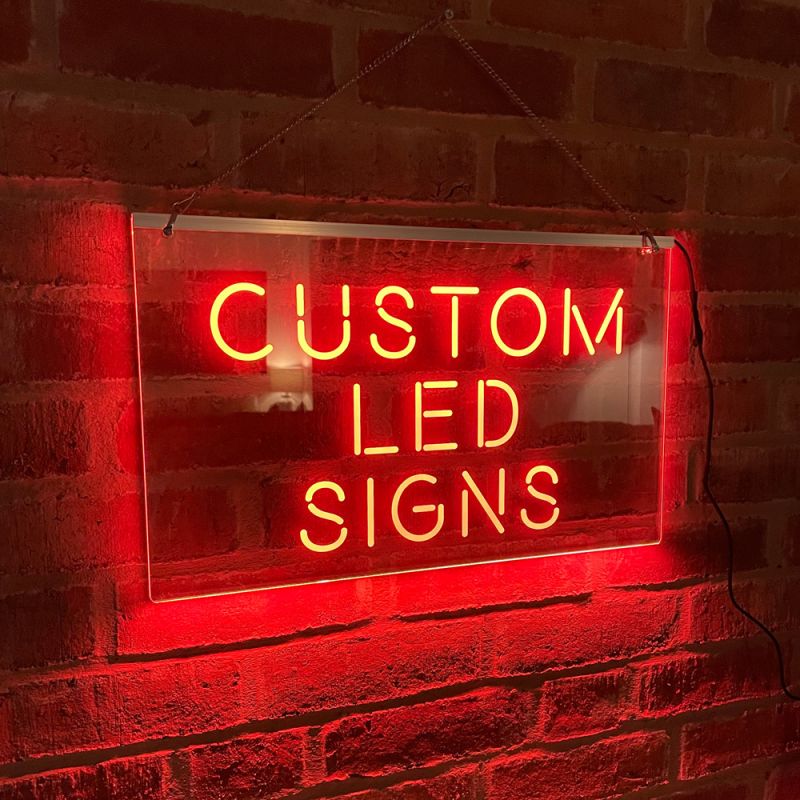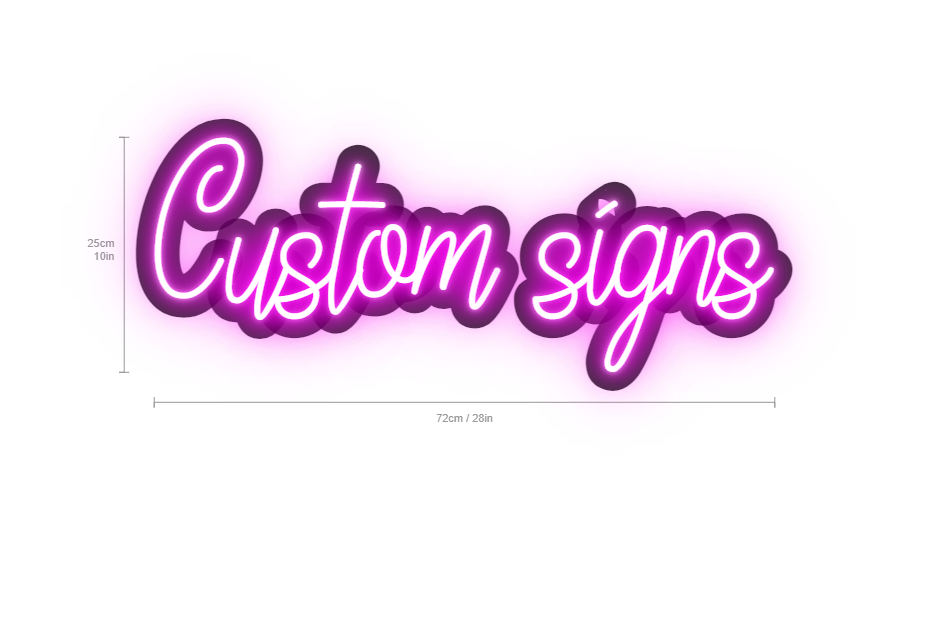In the bustling world of nightlife, one of the first things to catch your eye as you walk down a dimly lit street is often a glowing bar sign. From the neon brilliance of big city dive bars to the rustic wood-carved signs of small-town pubs, bar signs have become more than just functional markers—they're artistic expressions that tell the story of the venue, its patrons, and its place in the community. This post explores the art, history, and cultural significance of bar signs, shedding light on why they hold such a unique place in the world of hospitality and design.
The Evolution of Bar Signs
Bar signs have a long and storied history that stretches back to ancient times. In the days before widespread literacy, signs were the primary way for inns, taverns, and drinking establishments to signal their presence to passersby. Simple images of beer mugs, wine glasses, or animals were often used to denote that food and drink were available inside. These pictorial signs served as a universal language, one that transcended the barriers of dialect and education.
As time progressed, bar signs evolved from crude images to more elaborate works of art. During the Renaissance and into the Victorian era, signs began to feature intricate details, such as coats of arms, mythical creatures, and heraldic symbols. Each sign became a reflection of the bar’s character and reputation, with some even becoming local landmarks in their own right. The materials used to make these signs also expanded, ranging from carved wood to hand-forged metal, and eventually, in the 20th century, to neon and electric lighting.
The Neon Revolution
The advent of neon in the early 20th century brought a new dimension to bar signage, particularly in urban environments. Neon signs became iconic symbols of the nightlife culture that was rapidly developing in cities like New York, Las Vegas, and Los Angeles. These glowing signs, with their vivid colors and eye-catching animation, drew patrons in like moths to a flame. The warm buzz of a neon light has since become synonymous with late-night drinks, smoky rooms, and lively conversation.
What made neon so appealing for bars was not only its visual impact but its durability and versatility. Neon could be bent and shaped into almost any form, allowing bar owners to create custom logos, slogans, or symbols that captured the essence of their establishment. Whether it was a martini glass, a cowboy boot, or the name of the bar in bold script, neon signs became an essential part of the bar's branding.
Some bar signs even took on a life of their own, becoming cultural symbols that extended far beyond the venues they represented. Las Vegas, for example, became famous for its elaborate neon displays, many of which adorned casinos and hotel bars. The city's neon glow became so iconic that today, many of its most famous signs have been preserved in museums or reimagined for modern use.
The Role of Bar Signs in Branding

In today’s competitive nightlife industry, a well-designed bar sign does more than just tell people where to go—it helps shape the identity of the bar. From the moment a customer sees a bar's sign, they begin to form an impression of what they can expect inside. A sleek, modern sign might suggest a high-end cocktail lounge, while a hand-painted wooden sign could hint at a cozy, down-to-earth pub.
For many bars, especially in trendy urban neighborhoods, the sign is a key part of the branding. It helps establish the vibe of the bar, whether it's cool and contemporary, quirky and artistic, or nostalgic and retro. In this way, the sign often works hand-in-hand with the interior design and menu offerings to create a cohesive experience for the customer.
Craft cocktail bars, for example, often use minimalist signs with elegant typography to reflect their curated, upscale offerings. On the flip side, dive bars might embrace a more casual or gritty aesthetic, with hand-painted or retro-inspired neon signs that speak to their laid-back atmosphere. The aesthetic of the sign has become an essential part of drawing in the right crowd.
Famous Bar Signs Around the World
Some bar signs have become famous in their own right, transcending their role as mere advertisements to become cultural landmarks. Here are a few of the most iconic bar signs around the world:
-
The Green Door – Las Vegas, Nevada: This infamous neon sign advertises one of the most well-known bars in the U.S. With its deep connection to the era of prohibition, the mysterious name and neon lettering of The Green Door have helped solidify it as an essential part of Las Vegas' nightlife.
-
The Blind Pig – London, UK: Situated in the heart of London’s cocktail scene, The Blind Pig features an eye-catching sign that plays on the speakeasy culture of the 1920s. The sign’s elegant yet whimsical design perfectly encapsulates the bar's prohibition-era vibe.
-
The Hemingway Bar – Paris, France: Named after the famous author, this bar has become synonymous with literary culture in Paris. Its classic, understated sign hints at the sophistication and history found within, drawing in book lovers and cocktail enthusiasts alike.
-
The Slaughtered Lamb Pub – New York City, New York: This Greenwich Village bar boasts one of the most unique and slightly eerie bar signs in the world. With its gothic font and blood-red imagery, the sign draws inspiration from the name, giving the bar an air of mystery that has become a talking point among both locals and tourists.
The DIY Trend: Personalized Bar Signs
In recent years, a growing trend has emerged for personalized and DIY bar signs. Many bar owners are looking for ways to stand out in a crowded market, and creating a unique, handmade sign is one way to do just that. Whether it’s a small neighborhood bar or a trendy downtown hotspot, personalized signage allows bars to showcase their individuality.
This DIY approach often results in some incredibly creative designs. Think vintage-style light-up letters, hand-painted murals, or repurposed materials like old road signs or reclaimed wood. The creativity behind these signs adds character to the bar and makes it more memorable for customers.
Some bar signs even invite local artists to contribute to the design of their signs, further deepening their connection to the community. This collaborative approach not only results in visually stunning signage but also fosters a sense of ownership and pride among locals.
The Future of Bar Signs: Digital and Interactive Innovations
As technology continues to evolve, so too does the world of bar signs. Digital signage, for instance, is becoming increasingly popular in modern bars and nightclubs. These signs can display dynamic content, such as daily specials, event announcements, or even live social media feeds. LED technology allows for bright, colorful displays that can change at a moment’s notice, giving bar owners the flexibility to update their signage as needed.
Some bars are even experimenting with interactive signs. Imagine walking past a bar and seeing a sign that reacts to your presence—perhaps lighting up in response to your movement or displaying personalized messages. These interactive elements add a new layer of engagement, creating a more immersive and memorable experience for patrons.
However, despite these technological advances, the classic bar sign—whether neon, wood, or hand-painted—still holds a special place in the hearts of many. There’s something about the nostalgia and artistry of a traditional bar sign that resonates with people, making it a timeless element of the nightlife experience.
Conclusion: The Lasting Impact of Bar Signs
Bar signs are far more than just practical markers guiding thirsty patrons to their next drink. They are works of art, cultural symbols, and essential branding tools that help define the personality of a bar. From the glowing neon of big city dive bars to the intricate woodwork of small-town pubs, these signs create lasting impressions and often become iconic representations of the venues they advertise.
As we move further into the digital age, the traditional bar sign continues to evolve, blending old-world craftsmanship with modern technology. Yet, no matter how far the design world progresses, the fundamental purpose of a bar sign remains the same: to light up the night and welcome everyone in for a good time. So the next time you spot a glowing sign beckoning you from the corner of the street, take a moment to appreciate the history, artistry, and thought that went into creating that little beacon of nightlife culture.




